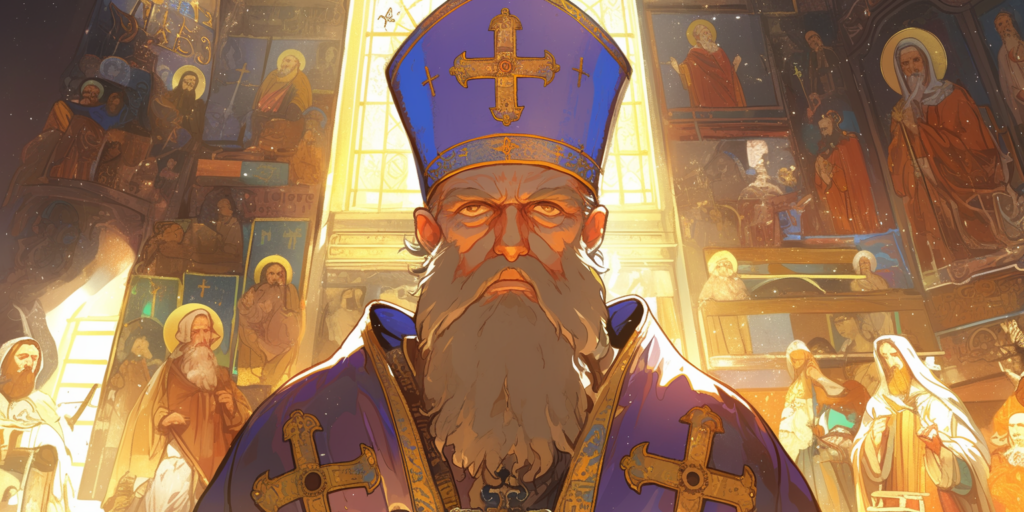
Saint of the Day: June 14, 2024
St. Methodius I, born in Syracuse, Sicily, was a prominent figure in the early Christian Church, known for his staunch defense of the veneration of icons during the second Iconoclast persecution. His life was marked by suffering, perseverance, and a deep commitment to the orthodox Christian faith.
Early Life and Monastic Commitment
Born into a wealthy family, Methodius initially sought a career at the imperial court in Constantinople. However, a monk persuaded him to devote his life to God, leading him to enter a monastery. His journey of faith would soon put him at the forefront of one of the Church’s most tumultuous periods.
Defender of Icons
During the reign of Emperor Leo V (813-820), the second Iconoclast persecution erupted. This period saw the widespread destruction of religious icons and the persecution of those who venerated them. Methodius, along with many other monks, staunchly defended the use of icons, which led to his persecution. In 815, Patriarch Nicephorus I was deposed for his resistance to the Iconoclast decrees, and Methodius was sent to Rome to seek the support of Pope Paschal I.
Imprisonment and Suffering
Upon returning to Constantinople, Methodius faced severe punishment. Emperor Michael II (820-829) had him scourged and imprisoned in a disused tomb on the island of Antigoni for seven years. Despite these harsh conditions, Methodius remained steadfast in his faith, becoming a symbol of resilience and dedication.
Restoration and Leadership
The situation changed dramatically with the death of Theophilus in 842 and the ascension of his widow, Empress Theodora, as regent for her son, Michael III. A devout iconophile, Theodora ended the persecution and sought to restore the veneration of icons. Methodius was appointed Patriarch of Constantinople, replacing the iconoclast John VII.
As patriarch, Methodius convened a council in 842 to reaffirm the decrees of the Second Council of Nicaea, which supported the veneration of icons. On February 19, 842, a grand procession reinstated the icons in churches, marking the first “Feast of Orthodoxy,” celebrated annually on the first Sunday of Lent in the Byzantine Church.
Legacy and Sainthood
Methodius’ tenure as patriarch was marked by his efforts to depose iconoclast bishops and replace them with supporters of the orthodox practice. Although he faced opposition and accusations, his commitment to orthodoxy never wavered. He was also known for his writings, including a life of St. Theopanes and several sermons and letters.
St. Methodius died on June 14, 846, and was succeeded by Ignatius. He is remembered as a saint in both the Catholic and Orthodox traditions, celebrated for his unwavering defense of the faith and his role in restoring the veneration of icons.
Reflection and Prayer
St. Methodius I’s life teaches us the importance of steadfast faith and the courage to defend our beliefs, even in the face of severe persecution. His legacy as a defender of orthodoxy and a symbol of resilience continues to inspire the faithful.
Prayer:
St. Methodius I, you stood firm in your faith and defended the veneration of holy icons despite great suffering and persecution. Through your intercession, grant us the strength to uphold our beliefs and the courage to face challenges with unwavering faith. May we be inspired by your example to live lives of dedication and devotion to God. Amen.